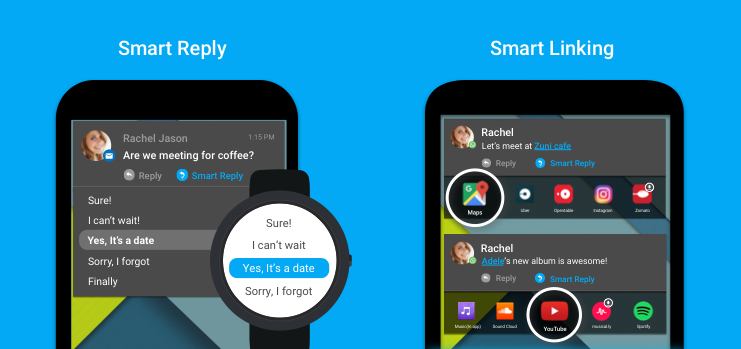You might not realize this, but most of us text the same phrases over and over again all day long. People ask us about lunch plans and we tell them we want to meet at 12. Our kids text us and we say we’ll be home at 5. It’s crazy how many text responses are identical.
Lately, I’ve been using a new app called Fluenty that solves some of these issues. It uses A.I. to read incoming text messages and offer up stock responses. (Yes, for anyone familiar with the canned responses in Gmail or the smart replies in Google Inbox, it works about the same way.)
What’s different is that the app inserts itself into your SMS and Facebook Messenger conversations. It also works with WhatsApp, KakaoTalk, or Google Hangouts. I expect them to add more, since that’s what Android is all about. (That’s right — it only works on Android for now because of how Apple severely limits any app developer from intercepting notifications and taking over SMS interactions.) It’s a good lesson in how to make messaging easier and faster, not to mention a good lesson in doing something new and novel on Android.
How does it save time? Over the course of a day, I used it several times with people messaging me on Facebook about new bot news. I set up canned responses (sorry, it works) to let people know I liked their idea for a bot and will respond soon. Later, I make the time to talk more with that person and exchange some ideas over Messenger.
For texts, it was much more personal. When a few people let me know about their plans and asked questions, I let the app take over and hit replies to at least confirm I was engaging with them. This is a big weakness of mine, because in the modern culture of constant texting, it is customary (especially with millennials) to acknowledge you received a text.
The app — which is not really an app, since you install it and then use it when you start messaging with someone using a notification window — is not perfect. The A.I. in particular doesn’t seem to inject much more than a quick canned response. When someone asked about lunch plans and used the word “when” it obviously popped up responses related to time. When it asked about “what” I had a few more options, like saying I wanted “nothing” for lunch. When the answers made sense, they saved me time and typing. When they didn’t make sense, I typed my own response. Fortunately, I could see this improving quickly.
For example, if someone asks about what to eat for lunch (trust me, it happens multiple times per day), the A.I. can pop up options like seafood or fast food. Maybe it can learn what I like and use that response. It could even automate things like scheduling and food ordering. For now, though, it is still helping and I plan to keep using it, even if it has a ways to go.
The app also works on Android Wear smartwatches like the Samsung Gear S2. I’m planning to test that next.
VentureBeat's mission is to be a digital town square for technical decision-makers to gain knowledge about transformative enterprise technology and transact. Learn More

